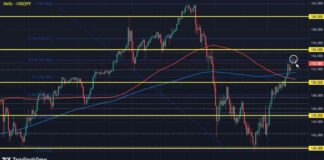China’s leaders have set forth ambitious plans to propel the country’s economy forward over the next decade and beyond. With visions that span one, five, and even 15 years, the need for vast amounts of manpower, materials, and technology is palpable. However, amidst these grand plans, there looms a critical challenge that China must address – a crisis of confidence.
Understanding the Crisis
China finds itself in the throes of a crisis of confidence, a situation that has been steadily brewing in recent times. This crisis has manifested in various ways, causing ripples across the economy and the wider financial landscape. Stock prices have experienced significant downturns, leading to growing unease among investors who are bracing themselves for a potential autumn chill. The implications of this crisis are far-reaching, not only affecting domestic markets but also influencing global economic dynamics.
Impact on Investors
As the uncertainty surrounding China’s economic future deepens, investors are left grappling with a myriad of concerns. The volatility in stock prices has spurred a sense of caution among investors, prompting them to reassess their investment strategies and risk appetites. The looming question of whether interest-rate cuts will provide the much-needed boost to oil prices further complicates the decision-making process for investors. This sense of instability has the potential to reverberate across various sectors, creating a ripple effect that could impact global financial markets.
Global Ramifications
The repercussions of China’s crisis of confidence extend far beyond its borders, casting a shadow over the global economic landscape. One notable impact is the surge in American office delinquencies, a trend that can be attributed, at least in part, to the uncertainties emanating from China. This interconnectedness underscores the intricate web of relationships that govern the modern financial world, highlighting the need for a coordinated approach to addressing economic challenges.
In the era of social media dominance, the role of digital platforms in shaping market sentiments cannot be understated. The question of whether social media has broken the stock market looms large, as the rapid dissemination of information and opinions can amplify market fluctuations and exacerbate volatility. This digital age presents both opportunities and challenges, necessitating a nuanced understanding of the evolving dynamics between social media and financial markets.
Potential Solutions
Addressing China’s crisis of confidence requires a multifaceted approach that takes into account the intricacies of the economic landscape. One potential solution lies in bolstering transparency and communication channels to rebuild trust among investors and stakeholders. Clear and consistent messaging from China’s leadership can help assuage concerns and instill confidence in the country’s economic trajectory.
Furthermore, proactive measures to stabilize financial markets and bolster investor sentiment are essential in navigating through this challenging period. Strategic interventions, such as targeted stimulus packages and regulatory reforms, can help mitigate the impact of the crisis and pave the way for sustainable economic growth. Collaborative efforts between China and its global partners can also play a crucial role in restoring confidence and fostering a climate of stability and resilience.
Looking Ahead
As China grapples with its crisis of confidence, the path forward remains uncertain yet brimming with possibilities. By addressing the underlying factors contributing to this crisis and implementing strategic measures to rebuild trust, China can chart a course towards economic revitalization and sustainable growth. The challenges ahead are formidable, but with resilience, innovation, and a commitment to transparency, China has the potential to emerge stronger and more resilient from this period of uncertainty.

















